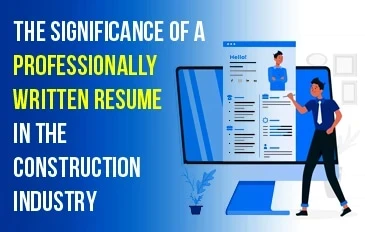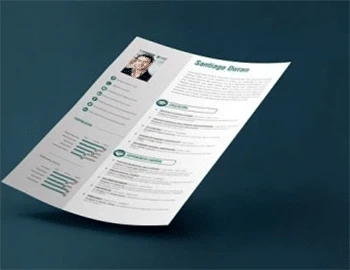Michael DeSafey | Executive Recruiter and HR Professional
Building a Strong Technical Portfolio Section on Your Resume
When it comes to standing out in fields like construction, engineering, or environmental sciences, having a powerful technical portfolio section on your resume can be a game-changer. This section showcases your hands-on experience, technical drawings, specialized projects, and proficiency with industry software like AutoCAD or BIM, making it easier for hiring managers to see exactly what skills you bring to the table. Curating a strong technical portfolio section can help demonstrate both your practical abilities and your commitment to mastering the tools and processes crucial to your profession.
Here’s a step-by-step guide on how to create an impressive technical portfolio section on your resume that captures the attention of recruiters and hiring managers in technical fields.
Understand the Purpose of the Technical Portfolio Section
A technical portfolio section differs from other parts of your resume. It’s dedicated to showcasing specific projects, technical skills, and design contributions that provide evidence of your expertise. For professionals in construction, engineering, or environmental science, this section is your opportunity to highlight:
- Technical drawings: These demonstrate your ability to visualize and communicate complex structures and processes.
- Software expertise: Proficiency in programs like AutoCAD, BIM, or GIS tools shows that you’re prepared to handle the industry’s technical demands.
- Project contributions: Detailing your role in significant projects highlights your hands-on experience and technical problem-solving abilities.
A well-curated technical portfolio section will give recruiters concrete examples of your work, showing not just what you’ve done but also how you’ve applied your skills in real-world scenarios.
Choose Relevant Projects
The first step in creating a strong technical portfolio section is selecting the right projects to include. Choose projects that:
- Demonstrate a range of skills: If you have experience with several software tools or have worked on various project types, highlight this diversity. For example, show work on both commercial and residential projects, or include examples of environmental and structural projects.
- Showcase technical skills and leadership: Select projects where you not only contributed technically but also made strategic decisions or led part of the project. Employers appreciate candidates who can both follow detailed instructions and contribute to project planning.
- Highlight recent work: If possible, select projects from the last three to five years. This shows that your skills are up-to-date, and you’re familiar with the latest software versions and industry trends.
Remember, you don’t need to include every project you’ve worked on. Instead, curate a selection of projects that best represent your strengths and most relevant experience.
Include a Variety of Technical Drawings and Design Contributions
Technical drawings and design elements give hiring managers a glimpse into your technical capabilities and attention to detail. When choosing which drawings or designs to include, focus on those that best demonstrate:
- Complexity: Include drawings that show your ability to handle intricate details or complex structures.
- Software expertise: If you used AutoCAD, BIM, or another industry-standard software, mention it alongside each example.
- Creativity and problem-solving: Whenever possible, include designs that required you to come up with creative solutions or think outside the box to meet project goals.
If you’re including printed or digital copies of technical drawings, make sure they’re high-resolution and clearly labeled. In the context of a resume, you’ll likely need to keep these visuals brief, but if you have an online portfolio, consider linking to additional visuals or project descriptions.
Showcase Software Proficiency with Real Examples
Listing software proficiencies like AutoCAD, Revit, or ArcGIS is common, but providing examples of how you used them in projects sets you apart. In your technical portfolio section, list the specific software used for each project, and provide a brief description of how it was applied. Here’s an example:
Project: Residential High-Rise Design
Software: AutoCAD, Revit
Description: Led the structural design for a 15-story residential building, creating floor plans, detailed structural drawings, and coordinating design elements with architectural teams.
By listing the software alongside each project, you demonstrate that your proficiency isn’t just theoretical—you have experience using these tools in complex, real-world scenarios.
Quantify Your Contributions and Project Impact
Numbers add credibility to your achievements. Quantify your contributions wherever possible, such as the size or budget of the project, the number of team members, or the results achieved. Examples include:
- Cost savings: If your design contributed to cost efficiencies, mention this as a percentage or dollar amount.
- Project scope: Describe the scale of the project, such as the square footage of a building or the environmental impact area.
- Timeline achievements: If your work helped complete a project ahead of schedule, mention the time saved.
Here’s an example:
Project: Sustainable Waste Management System Design
Scope: 25-acre environmental restoration project
Contribution: Designed and implemented a sustainable waste management system, reducing waste by 40% and saving the client $200,000 in projected disposal costs.
Quantifying your achievements helps prospective employers see the value you can bring to their projects and organization.
Describe Technical Challenges and Problem-Solving Abilities
Most technical projects come with their own set of challenges. Briefly describing these obstacles—and how you overcame them—can help demonstrate your problem-solving skills and resilience. For example:
Project: Coastal Retaining Wall Design
Challenge: Required innovative solutions to manage the impact of high tidal changes and harsh weather conditions.
Solution: Used a combination of reinforced concrete and natural rock to create a durable, eco-friendly barrier that minimized environmental disruption.
Employers want to see how you handle complex issues, and a quick summary like this can make a powerful impact.
Incorporate Keywords for SEO and Applicant Tracking Systems (ATS)
Most resumes are initially scanned by applicant tracking systems (ATS), which look for specific keywords to determine if your skills match the job description. To optimize your technical portfolio section for ATS, make sure you’re including relevant keywords, such as:
- AutoCAD
- BIM (Building Information Modeling)
- GIS (Geographic Information Systems)
- Project management
- Environmental compliance
- Site analysis
These terms help ensure your resume makes it through ATS filters, increasing the likelihood that a recruiter or hiring manager will see it.
Link to an Online Portfolio or Technical Profile
If you have an extensive portfolio of technical drawings or project examples, consider creating an online portfolio and linking to it directly from your resume. Platforms like LinkedIn, Behance, or personal websites allow you to share larger files, additional visuals, and more detailed project descriptions than you could fit on a single-page resume.
When linking to an online portfolio, ensure it is well-organized and easy to navigate. Group projects by category (e.g., residential, commercial, environmental) or software used to make it easy for hiring managers to find examples relevant to their needs.
Keep the Technical Portfolio Section Concise
While it’s tempting to include as many details as possible, the technical portfolio section of your resume should still be concise. Aim for two to four key projects, each with a short description that includes:
- Project title and scope
- Your role and contribution
- Software used
- Quantifiable results or impact
Keeping the descriptions brief ensures your resume remains clean and focused, making it easier for hiring managers to scan and understand your skills quickly.
Tailor the Technical Portfolio Section to Each Job Application
Finally, tailor your technical portfolio section to the job description for each position you apply to. Review the job requirements, and prioritize projects that align with the specific skills and experience the employer is seeking. For example, if you’re applying for a position that requires experience with environmental restoration, make sure you highlight projects that involve sustainability or environmental compliance.
By customizing this section for each application, you show prospective employers that you’re a perfect fit for their unique needs, increasing your chances of landing an interview.
In Summary
A well-crafted technical portfolio section can transform your resume from a list of roles and responsibilities into a compelling showcase of your technical abilities, problem-solving skills, and hands-on experience. By carefully selecting projects, emphasizing software proficiency, and quantifying achievements, you create a section that effectively communicates your qualifications. Pair this with SEO-optimized keywords and a link to an online portfolio, and you’ll have a resume that not only stands out to recruiters but also passes through ATS filters with ease.
Curating a strong technical portfolio section requires a thoughtful approach, but the effort will pay off as it helps you make a powerful first impression with hiring managers in the technical fields. Whether you’re in construction, engineering, or environmental science, your technical portfolio can be the key to showcasing your real-world skills and setting yourself apart from other candidates.
Webuild Resumes is a leading resume writing services firm dedicated to the construction, engineering and environmental industries. To learn more about resume writing and professional branding services, please visit: www.webuildresumes.com




